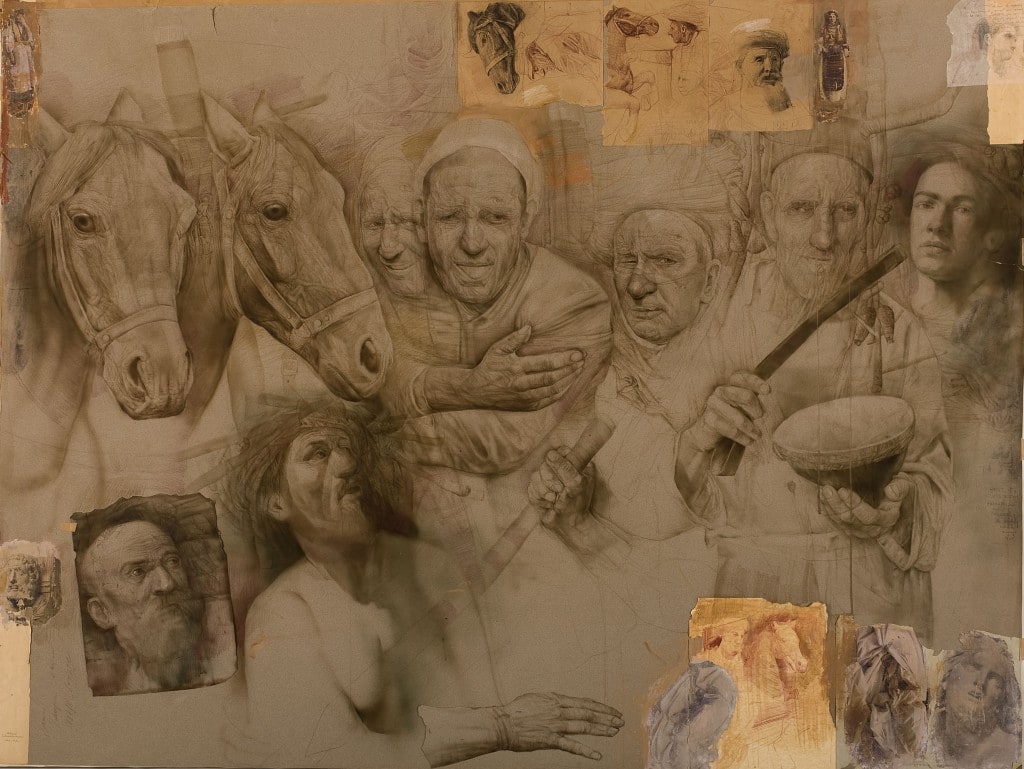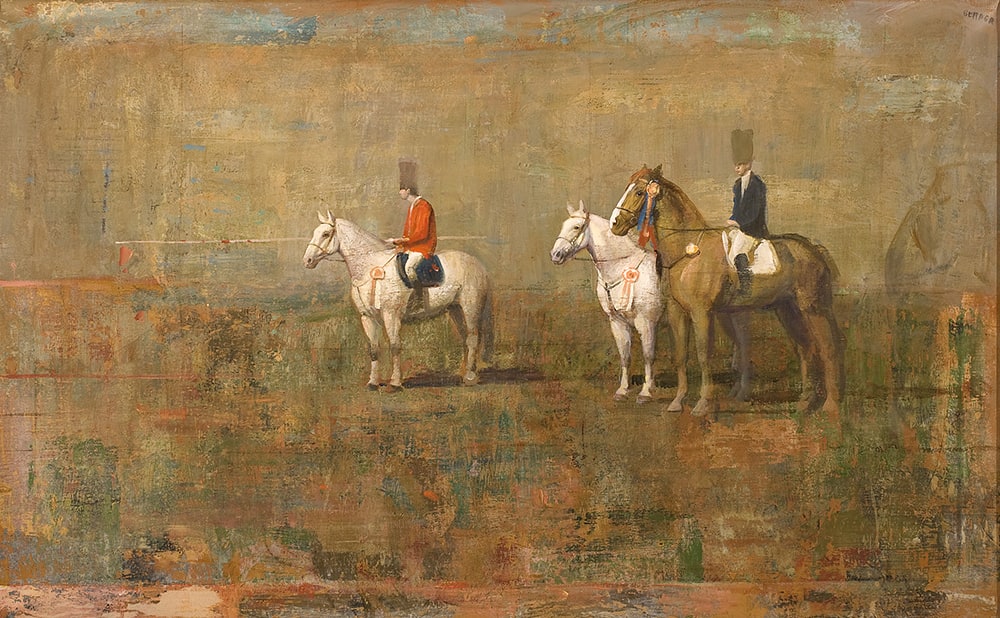28 February 2017
Mersad Berber: An Allegory of Bosnia exhibition centres on the art of Mersad Berber, who is one of the greatest and most significant representatives of Bosnian–Herzegovinian art from the second half of the 20th century.
Inspired by the great European masters, from Renaissance to Art Nouveau, Berber’s works exemplify the deep, opaque whites of his journeys through the fairy tale landscapes of Bosnia to the dark, macabre burrows of Srebrenica.
The cycle The Chronicle of Sarajevo (1975-1979), inspired by the annals of Mula Mustafa Ševki Bašeskija (1746-1804), a scribe, chronicler and man of learning (muallim) from a small shop beneath the Sarajevo clock-tower, expressively elaborates human suffering and tragedies, disclosing his warm self-full of empathy, addressed to the people living on the margins of society whom we can never find in standard historiography. Reviving the scents, colours and sounds of Sarajevo Čaršija in the 18th century, Berber opens up before us, as a demiurge, “the historic mise-en-scène” of Ottoman Sarajevo with its kaleidoscope of most diverse physiognomies and destinies.


Mersad Berber (1940-2012), is one of the greatest and the most significant representatives of Bosnian-Herzegovinian and Yugoslav art in the second half of the 20th century. His vast body of expressive and unique works triggered the local art scene’s recognition into Europe as well as the international stage.
Tuesday - Saturday 10:00 - 19:00
Friday 10:00 - 22:00
Sunday 12:00 - 18:00
The museum is closed on Mondays.
On Wednesdays, the students can
visit the museum free of admission.
Full ticket: 300 TL
Discounted: 150 TL
Groups: 200 TL (minimum 10 people)